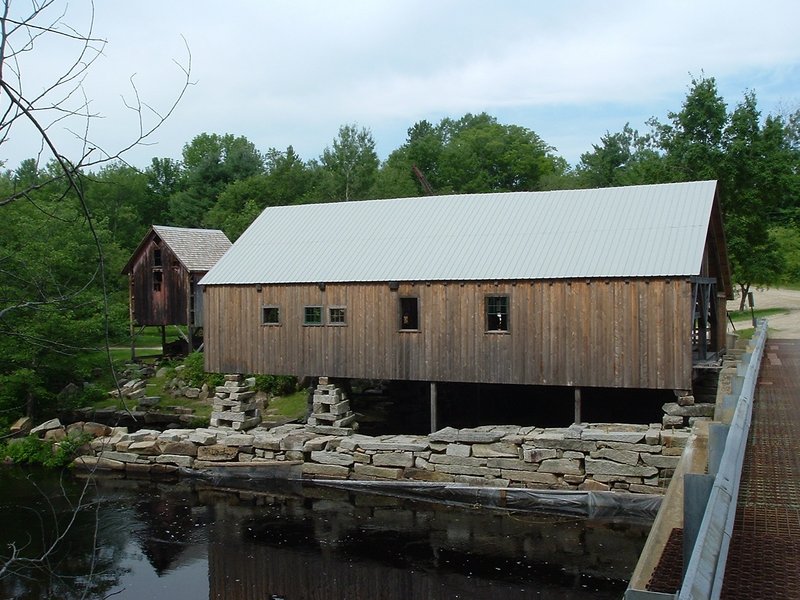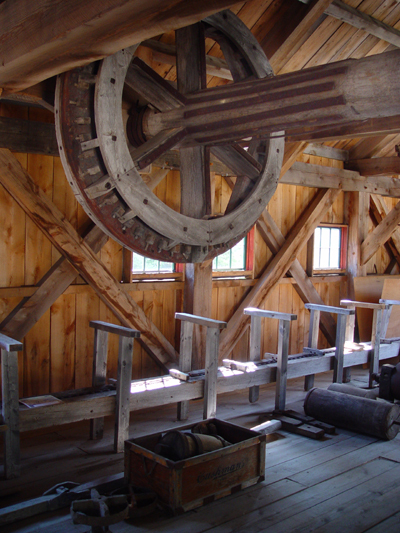Down by the old millstream in Harrison lays a piece of forgotten New England.
Scribner’s Mill on the Crooked River opens its doors this weekend for its 18th annual Back to the Past celebration.
This water-powered sawmill had a remarkable, nearly unheard of run from 1847 to 1962 in an idyllic hidden valley. You could easily imagine running into Henry David Thoreau here.
Daytime events will feature old cars, tours of the mill, wooden-barrel-making demonstrations, a working blacksmith shop and cedar-shingle sawing. Live music with The Highland String Trio begins at 4 p.m. Saturday; a pig and turkey roast will be offered at 5 p.m. Saturday. Mill demonstrations continue from 10 a.m. to 4 p.m. Sunday.
Scribner’s Mill Preservation Inc. is in its third decade seeking to restore what is likely the only water-powered sash saw – or “up-and-down” – mill left in North America. The group believes it has a first-rate, museum quality site on its hands.
“Our mission is education,” said Richard Jackson, president. “We want to become a world-class site for schoolchildren and college kids.”
The sash saw was the first type of sawmill technology. Earlier methods such as pit sawing, where one man stood on a log while another was below in a pit – the two pulling a long saw up and down between them – sawed solely by hand. The sash saw, a stiff blade that articulated up and down in a sash like a window, mimicked this method with the aid of waterpower. To feed the need for homes, churches, businesses and barns, many early communities set up these mills along rivers and streams as soon as possible. The more efficient circular saw followed around the mid-19th-century, while the band saw ushered in the modern sawmill.
If you have an old house or barn from the early 1800s, chances are its boarding was sawn by a sash saw. These saw marks are can be identified by the straight “up-and-down” fashion of the blade. As well as a museum, the folks of Scribner’s Mill want to be a functioning enterprise, a source for this authentic restoration-quality lumber – even provide jobs for the local community.
“If we can once again operate with water power,” says Jackson, “we will be the only mill in North America with the original water power, the original site, the original equipment and the original buildings. It will be the only one. Any lumber that we produce will be extremely sought after for the restoration of our landmark facilities anywhere in America. I believe we could come close to producing $500,000 in product per year.”
Early 19th-century restoration lumber is reproduced now in a less than accurate fashion. A band saw will have its teeth altered and speed slowed down to produce something close to what a sash saw can produce.
Marilyn Hatch, secretary and chair of Back to the Past events, notes the Department of the Interior often mandates historic restorations use like processes and materials to qualify for certain designations. “Where can you find a sash-sawn piece of lumber?” she asks. “There’s just nothing out there.”
Hatch notes there are a handful of demonstration-only facilities with sash saws scattered throughout the continent, but none produce product for sale or are truly original operations.
“We have the potential to cut shingles, clapboards and barrels in addition to lumber and timber,” she adds.
Instead of clean, renewable water power, the mill runs for demonstrations today via a tractor linked to a long belt that turns the many wheels and machinery of the mill. In 1972 the old granite 12-foot high dam that created a mill pond was forcibly breached by the state to allow the free run of salmon upriver. The group is applying for permits to install a much smaller 3-foot natural rock ramp fishway that will allow 99 percent of species to pass, and is lower than an existing 5-foot structure at Bolsters Mills some two miles upstream.
“This is truly a realistic goal,” said Hatch. “People who come to the mill come to visit Maine and find us via a brochure or a sign on the road. When they get here they all say what a treasure this place is.”
Don Perkins is a freelance writer who lives in Raymond. He can be reached at: presswriter@gmail.com
Send questions/comments to the editors.



